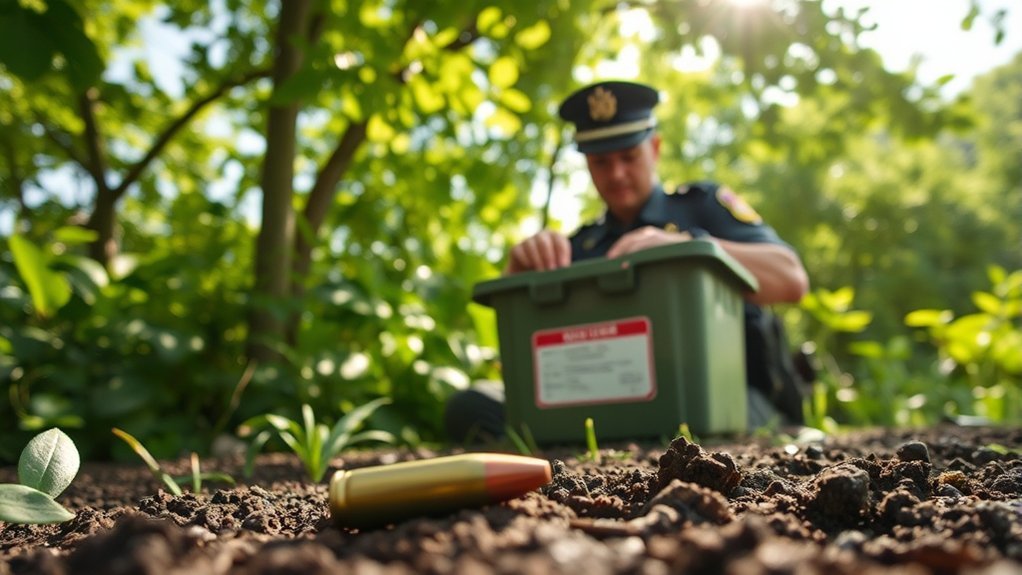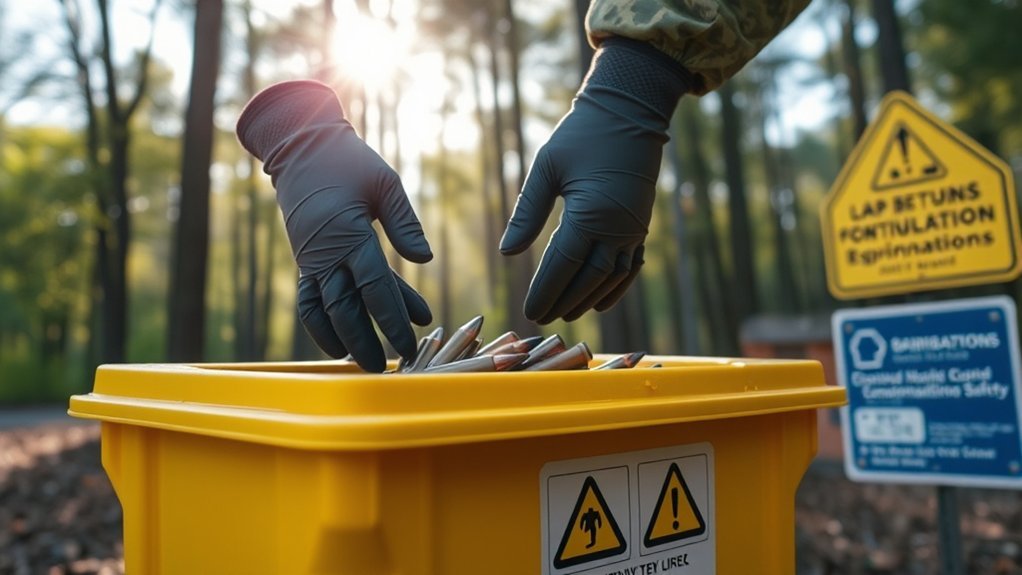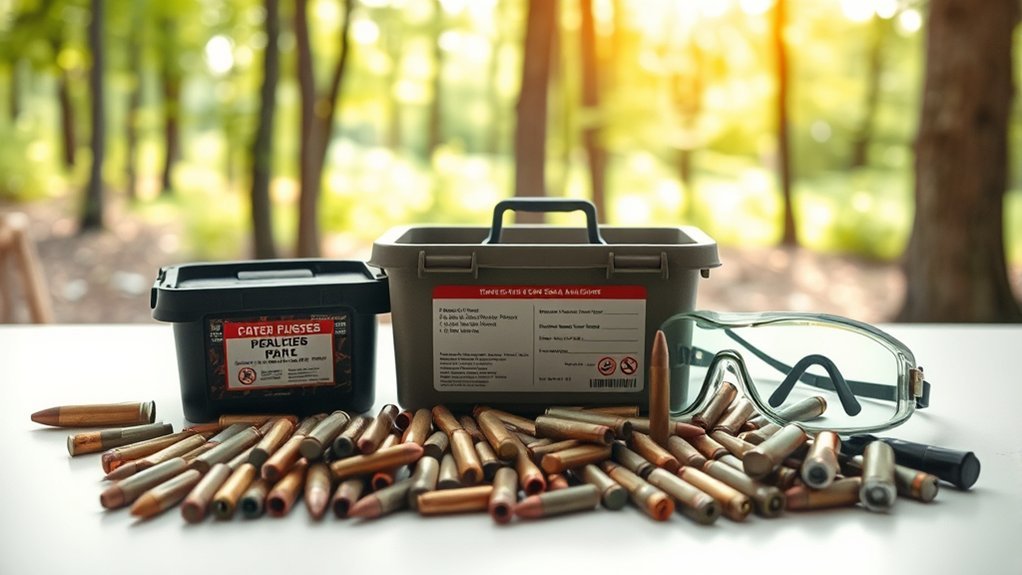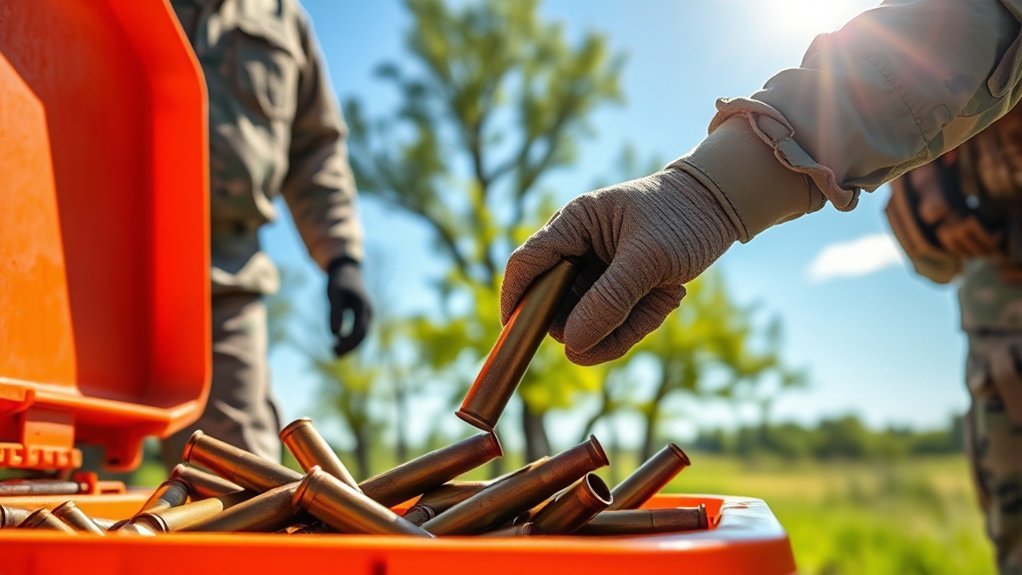When it comes to disposing of old ammunition, you need to be cautious. Improper disposal can lead to serious legal issues and pose risks to public safety. It’s crucial to understand the local regulations and safe methods available for this process. Ignoring these guidelines could endanger both your community and the environment. So, what are the best practices for ensuring safe disposal of your unused rounds?
Understanding the Risks of Improper Ammunition Disposal

When you improperly dispose of old ammunition, you not only risk legal repercussions but also endanger public safety and the environment. Ammunition can contain hazardous materials, such as lead and explosives, which can leak into soil and water sources if discarded carelessly. This contamination poses health risks to both humans and wildlife. Additionally, abandoned ammunition can become a danger if discovered by children or animals, leading to accidental injuries or fatalities. Law enforcement agencies may also take action against individuals who violate disposal regulations, resulting in fines or other legal consequences. Understanding these risks highlights the importance of responsible disposal. By prioritizing safety and environmental protection, you can guarantee a safer community and contribute to a healthier planet.
Local Regulations and Guidelines for Ammunition Disposal

Improper disposal of ammunition can lead to serious consequences, making it essential to understand local regulations and guidelines. Each area may have specific rules regarding how to handle old ammunition. To help you navigate these regulations, here’s a quick reference table:
| Regulation Type | Description |
|---|---|
| State Laws | Vary by state; check with local authorities. |
| Municipal Ordinances | Local laws may impose stricter guidelines. |
| Federal Guidelines | Follow ATF regulations for safe handling. |
Before disposing of ammunition, always consult your local law enforcement or hazardous waste disposal facility. Being informed can prevent legal issues and guarantee safety for you and your community.
Safe Methods for Disposing of Old Ammunition

To guarantee safety and compliance, you should always follow recommended methods for disposing of old ammunition. Start by contacting your local law enforcement agency or a licensed firearms dealer; they often have disposal programs in place. Never attempt to dispose of ammunition in regular trash, as this poses a serious safety hazard. If your area has designated hazardous waste collection events, take your ammunition there. Make certain you store the rounds in a secure container until you can dispose of them properly. Always handle ammunition carefully, treating it as live rounds, and avoid exposing it to extreme temperatures or moisture. By following these guidelines, you’ll make certain your safety and the safety of those around you.
Recycling Options for Unused Rounds
While safe disposal is important, recycling options for unused rounds can offer a responsible alternative. You can contribute to environmental sustainability by considering the following options:
- Local Recycling Centers: Many facilities accept ammunition components, allowing for metal recycling and reuse.
- Gun Ranges: Some ranges have programs to collect and recycle spent casings and unused rounds; check if yours participates.
- Specialized Programs: Look for organizations focused on ammunition recycling. They often provide safe drop-off points or collection services.
Best Practices for Storing Ammunition Until Disposal
When you need to store ammunition until you can dispose of it safely, following best practices is essential to confirm safety and maintain the integrity of the rounds. First, keep your ammunition in a cool, dry place, away from direct sunlight and moisture. Use original packaging or airtight containers to protect it from environmental factors. Always label containers clearly, indicating the type and quantity of ammunition. Store them in a secure location, out of reach of children and unauthorized individuals. Additionally, avoid storing ammunition near flammable materials. Regularly inspect your stored rounds for signs of corrosion or damage. By adhering to these practices, you’ll confirm a safe and responsible approach to storing ammunition until it can be properly disposed of.
Conclusion
In the grand tapestry of community safety, your role in the proper disposal of old ammunition is crucial. By following local regulations and utilizing safe disposal methods, you not only protect yourself but also safeguard your neighbors and the environment. Think of it as a small but significant thread woven into the fabric of responsible firearm ownership. So, when it’s time to part with those rounds, remember: safety and community go hand in hand.

